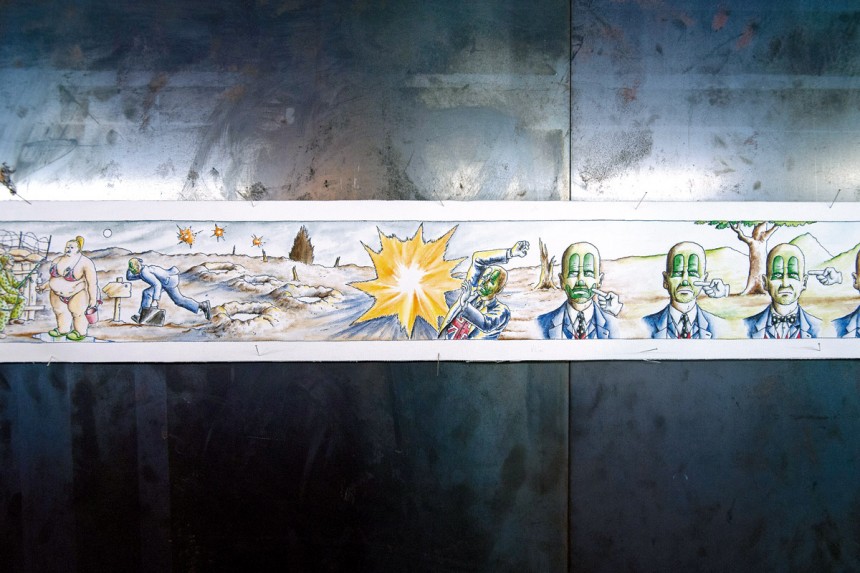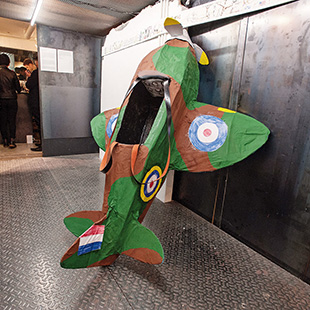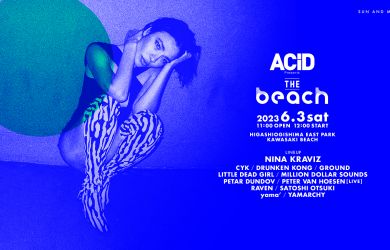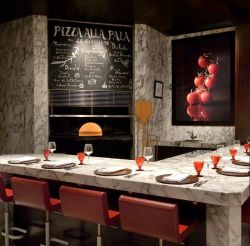
From his burnable pyro-sculptures to his pathetic Sad Clown character, Scotsman Jack McLean’s art aims to provoke questions and undermine authority. McLean has spent a good part of the last two decades in Tokyo and now brings his turbulent imagination to alternative space The Container.
Metropolis asked McLean about his new drawing series, It’s a long story, in full colour, without a happy ending.

What moved you to create your first color works for The Container?
I’d been working in black and white for a number of years, and I had wanted to try the same style of drawing in full color for a while. Hendricks Gin company were sponsoring the next show at The Container, so Shai Ohayon the director asked me if I wanted to try full-size color drawings in a solo show specifically for the space.
Tell us about the genesis of your Sad Clown character.
The Sad Clown started as a performance for an art event called “Dirty, Dirty, Sex, Sex” in Shinjuku-nichome. I wanted to do something clichéd and absurd that had elements of ’70s comedy TV and British working-class, naughty seaside humor. I’ve always hated clowns, and I find most performance art awful, so I thought this would be a good opportunity to kill two birds with one stone. A truly awful piece of performance art from a sad clown.
The ending is not a happy one… How did you feel after completing the work?
I work very hard on the big drawings—hours and hours in front of the canvas—so there is a sense of relief when they are completed. Then it’s time to start another one.
Your art, such as your micro and pyro sculptures, often takes aim at the commercial art establishment. What then are your thoughts on Banksy?
Success—in the sense of “commercial success”—means that you are involved in the commercial art world establishment, and that world is far removed from the street. Due to his success, Banksy is now part of the commercial establishment whether he likes it or not.
On viewing It’s a long story… a few artists that come to mind are Francis Bacon, Salvador Dalí and outsider artist Henry Darger. Please tell us your thoughts on them and any other possible influences on your artistic development.
Francis Bacon developed a unique style that elevated him beyond his limitations. Salvador Dalí’s eccentricity and flamboyant personality promoted his technical ability within the context of his time. Darger was discovered by an insider, and the obsessive nature of his work was easy to understand. But none of them have really had any direct influence on my work. I’m not sure if I recognize any artists who have influenced my work, but I’m sure to others looking at my drawings they will find connections.

How have two decades of living in Japan on-and-off shaped your art?
I’m not consciously aware of living in Japan shaping my art except from the ability to sustain myself economically and thus allowing me to create my art as a result of that. Perhaps the shaping, if any, has been in more subtle ways to do with the how and why I live here, and the respect I have for Japanese society.
How do people in Scotland and Japan approach art differently?
I think the way people go to see art in galleries in Tokyo is different. The great European masters are more accessible in Scotland than in Japan, so when there are “visiting exhibitions” here, I think there is probably more enthusiasm. Also, I think art shows are promoted more here—or used to be; maybe that is also the same now in the U.K.
Tell us about your favorite museums and galleries in Tokyo.
I like the museums in Ueno because they are older. I sometimes go to a rental gallery complex in an old apartment building in Ginza, but as it becomes more well-known, it is losing its appeal. But one day, I’ll go there and it will have become a vacant lot, so it doesn’t really matter.
What could be done to improve Japan’s art scene?
Affluent Japanese should spend their money on interesting and intrinsically valuable art rather than designer goods and the equivalent brand-name artists. This would create a healthy situation that would help to develop a more positive Japanese art scene.
The Container, 1F Hills Daikanyama, 1-8-30 Kamimeguro, Meguro-ku. Until Feb 15; Mon & Wed-Fri 11am-9pm, Sat-Sun 10am-8pm. Nearest station: Meguro. http://the-container.com

-390x250.jpg)



